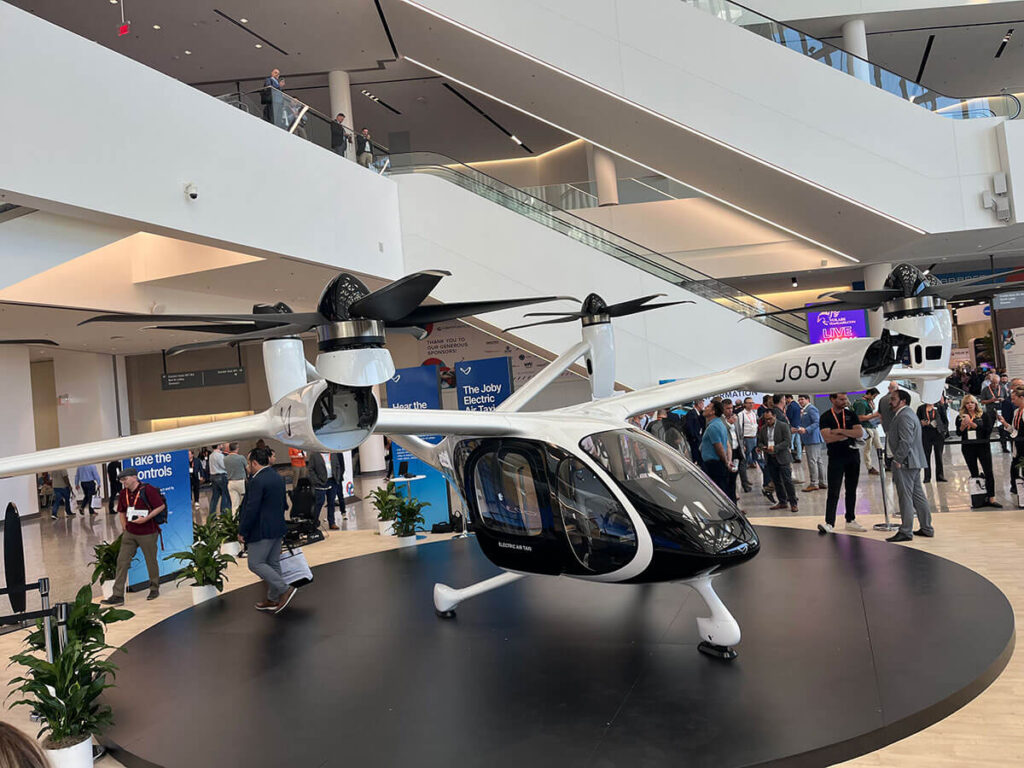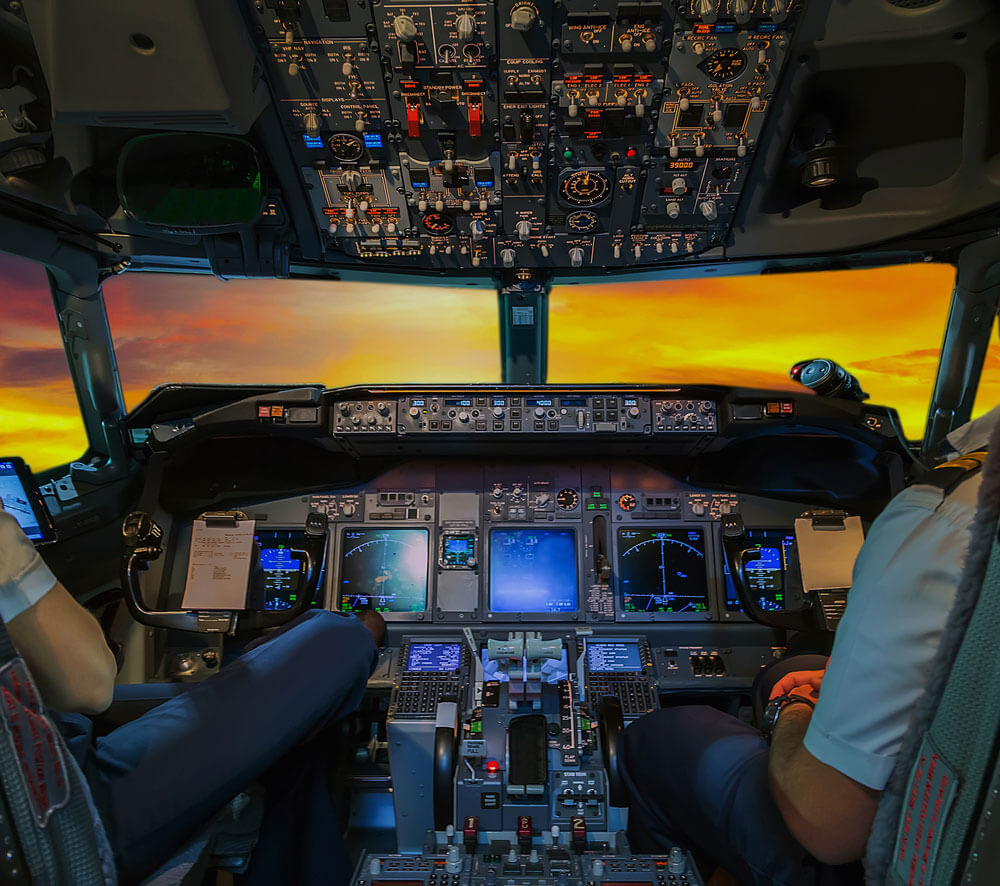By: Sarah Nilsson, AG Drone & AAM Law Ambassador
As the aviation industry stands on the brink of a revolutionary change, aspiring pilots are increasingly drawn to the exciting prospect of flying electric Vertical Takeoff and Landing (eVTOL) aircraft. The allure of this cutting-edge technology has many asking: “How does one become an eVTOL pilot in the United States?” This question opens up a cascade of inquiries about the future of flight training, the certification process and the transition for existing pilots into this new realm of aviation like:
- What will the flight training curriculum look like for eVTOL aircraft?
- Who will be the pioneering Certified Flight Instructors (CFIs) for this new category?
- How can pilots with existing FAA certificates, such as commercial or airline transport, transition to eVTOL operations?
- What are the requirements for flying eVTOLs in cargo or passenger air charter operations under 14 Code of Federal Regulations (CFR) Part 135 (Commuter and On-Demand Operations)?
The Federal Aviation Administration (FAA) answered these questions and more in its groundbreaking Special Federal Aviation Regulation (SFAR). Published in October 2024, and titled “Integration of Powered-Lift: Pilot Certification and Operations; Miscellaneous Amendments Related to Rotorcraft and Airplanes – Final Rule,” this regulation makes the path to becoming an eVTOL pilot more clear. This article delves into the new SFAR and what it means for aspiring eVTOL pilots who will lead the future of air travel.
The Rise of Powered-Lift Aircraft
Powered-lift aircraft, as defined by the FAA in 14 CFR Part 1, include heavier-than-air vehicles capable of vertical takeoff, vertical landing and low-speed flight. These aircraft rely primarily on engine-driven lift devices or engine thrust for lift during takeoff, landing and low-speed flight, while using non-rotating airfoils for lift during horizontal flight.
The eVTOL category falls under this powered-lift classification and represents a new era in aviation that combines the versatility of helicopters with the efficiency of fixed-wing aircraft. As companies like Archer and Joby make significant strides towards full certification, the FAA’s comprehensive SFAR provides a roadmap for the certification of powered-lift pilots, clarifies the operating rules for these innovative aircraft and paves the way for the integration of eVTOLs into the National Airspace System (NAS).
FAA’s New Regulatory Framework
The SFAR provides an alternative framework to stand-up initial groups of powered-lift pilots and flight instructors. It also adopts other frameworks to facilitate the certification of pilots seeking qualifications in a powered-lift with single functioning flight controls and a single pilot station.
This comprehensive regulation addresses three key areas: certification of powered-lift pilots; clarification of operating rules for powered-lift; and integration of powered-lift into the NAS. Set to remain in effect for ten years, the SFAR introduces both permanent amendments and temporary provisions to facilitate the smooth introduction of eVTOL aircraft into commercial operations.

Pilot Certification Requirements
In the SFAR, the FAA made permanent changes to 14 CFR Parts 61, 135, and 142 to train and certificate powered-lift pilots and instructors and temporary changes to create alternatives for airman certification.
The Pre-SFAR Rules
14 CFR Part 61 prescribes the requirements for issuing pilot and flight instructor certificates and ratings; the conditions under which those certificates and ratings are necessary; and the privileges and limitations of those certificates and ratings.
The FAA issues six levels of pilot certificates: student, sport, recreational, private, commercial, and airline transport pilot (ATP). It also assigns category, class, and type ratings on each pilot certificate. A pilot must hold the category, class, and type rating (if applicable) to act as pilot in command (PIC). Category is defined as a broad classification of aircraft, like airplane, rotorcraft or powered-lift. Class is defined as a group of aircraft within a category having similar operating characteristics, like single engine, multiengine, helicopter.
In this SFAR, the FAA did not establish classes within the powered-lift category because it lacked sufficient operational data to identify commonality and each powered-lift can have different configurations, unique inceptors (a wide variety of non-traditional pilot controls through which pilot inputs are managed for the purpose of operating the powered-lift), diversified flight controls and distinctive operating characteristics.
Type Ratings for Powered-Lift
One of the most significant changes introduced by the SFAR is the requirement for pilots to hold a type rating for each powered-lift aircraft they operate (per the new 14 CFR Part 61.31(a)(3)). Unlike traditional aircraft categories that have class ratings, the FAA has determined that the unique configurations and operating characteristics of powered-lift aircraft necessitate individual type ratings.
Alternative Certification Pathways
Recognizing the challenges of introducing a new aircraft category, the FAA established alternative frameworks for pilot certification. The FAA designed these pathways, outlined in the new 14 CFR Part 194, SFAR No 120, to facilitate the training and certification of the initial cadre of powered-lift instructors and pilots.
Minimum Training Requirements
Appendix A to 14 CFR Part 194 specifies the minimum requirements for pilot training programs in powered-lift aircraft with a single set of controls and a single pilot station. The FAA provided three options to facilitate pilot training:
- Recognition of a single flight control that is accessible by both the student and flight instructor and allows for the instructor to immediately intervene if necessary;
- Expanded use of simulators to allow an applicant to train in a simulator and gain necessary experience solo in the aircraft; and
- Deviation authority for consideration of future advancements in technology that is not currently validated at this time.
Flight Instructor Certification
To address the initial shortage of qualified flight instructors, the FAA created an alternate framework for test pilots and instructor pilots; adopted certain requirements for meeting PIC flight time and cross-country flight time requirements in 14 CFR Part 61; and expanded the opportunity for pilots to obtain powered-lift ratings at the commercial pilot certificate level through 14 CFR Part 135 training programs. Most of the alternative requirements would be available only to pilots who already hold a commercial pilot certificate and an instrument rating for another category of aircraft.
Test Flights and Training
The FAA’s new model will allow certain pilots employed by manufacturers to obtain the necessary training and experience through test flights and crew training activities. These pilots will form the initial cadre of instructors who can then conduct certification training for personnel at 14 CFR Part 141 pilot schools, Part 142 training centers and Part 135 operators. These instructors would then develop curricula for the initial powered-lift training at their respective organizations and conduct certification training at their respective certificate holders.
Flight Simulation Training Devices
The FAA also significantly expanded the use of Flight Simulation Training Devices (FSTDs) in eVTOL pilot training and qualification. While no powered-lift FSTDs are currently qualified, the FAA anticipates their near-term qualification and has proposed increased flight training opportunities through simulation.
Reduced Flight Time Requirements
The SFAR reduces the required Pilot in Command (PIC) flight time in powered-lift at the commercial pilot certificate level from 50 hours to 35 hours. Of these 35 hours, 15 may be completed in a Level C or higher Full Flight Simulator (FFS).
Flight Simulation Training for eVTOL Pilots
The FAA substantially broadened the use of Flight Simulation Training Devices (FSTDs), not just for eVTOL instructor pilots, but also for eVTOL pilot training and qualification generally. This decision recognizes the advancements in flight simulation technology and its potential to enhance pilot training for powered-lift aircraft.
Qualification Performance Standards
Powered-lift FSTDs are qualified by the FAA under 14 CFR Part 60.15 when they meet specific Qualification Performance Standards (QPS). 14 CFR Part 194.105 adds flexibility to Part 60 to permit qualification of FSTDs of powered-lift using components of existing standards for airplanes and helicopters where applicable and adding an equivalent level of safety to existing QPS components.
Virtual Reality, Extended Reality and Mixed Reality
The FAA recognizes the potential of virtual reality (VR), extended reality (ER) and mixed reality (MR) in improving FSTD quality and reducing simulation costs. The agency continues to engage with sponsors and manufacturers to work toward qualification of lower-level helicopter FSTDs with virtual reality systems, as well as to monitor the European Union Aviation Safety Agency’s (EASA) recent FSTD qualification with VR systems.
A Wide Range of Simulators
Qualification will not be limited to Level C Full Flight Simulators (FFS) and above, but will also include Flight Training Devices (FTD) at levels 4-7, which are less complex and typically less expensive, and FFS at levels A-D, not just the most advanced or highest-fidelity (Level C and D) simulators. This approach, which allows for the use of a mix of less expensive training devices, should increase accessibility to smaller operators and training organizations and potentially reduce overall training costs for eVTOL operators.
Part 135 Operations and Qualifications
The SFAR also addresses qualification requirements for powered-lift pilots serving in 14 CFR Part 135 operations. The FAA has adopted permanent changes to align training and qualification requirements for powered-lift pilots with those established for aircraft and rotorcraft pilots in Part 135. The FAA now also allows those who successfully complete Part 135 pilot checks to meet the practical test requirements for powered-lift ratings, subject to certain conditions. This provision offers a streamlined path for experienced pilots to transition to eVTOL operations.
The Path Forward for Aspiring eVTOL Pilots
The introduction of eVTOL aircraft represents a paradigm shift in aviation which promises to revolutionize urban air mobility and short-distance travel. As manufacturers race towards certification and operators prepare for the first commercial flights, the demand for qualified eVTOL pilots will undoubtedly soar.
For aviation enthusiasts and professional pilots alike, the opportunity to be at the forefront of this exciting new field is now within reach with the FAA’s new regulations. The journey for all who aspire to become eVTOL pilots begins with obtaining a commercial pilot certificate and an instrument rating. An additional 35 hours of powered-lift specific training – 15 of which could be done on a VR sim – will then pave the way for this exciting new career path.
Even though many questions still remain (such as the specifics of training curricula, the role of experienced instructors in assisting the first Certified Flight Instructors (CFIs), and how the FAA will prepare Designated Pilot Examiners (DPEs) and Check Airmen),
the future of aviation is electric, vertical and closer than ever before. One thing is certain: the skies of tomorrow will look very different from those of today and eVTOL pilots lead the charge into this new frontier of flight!
By: Sarah Nilsson

